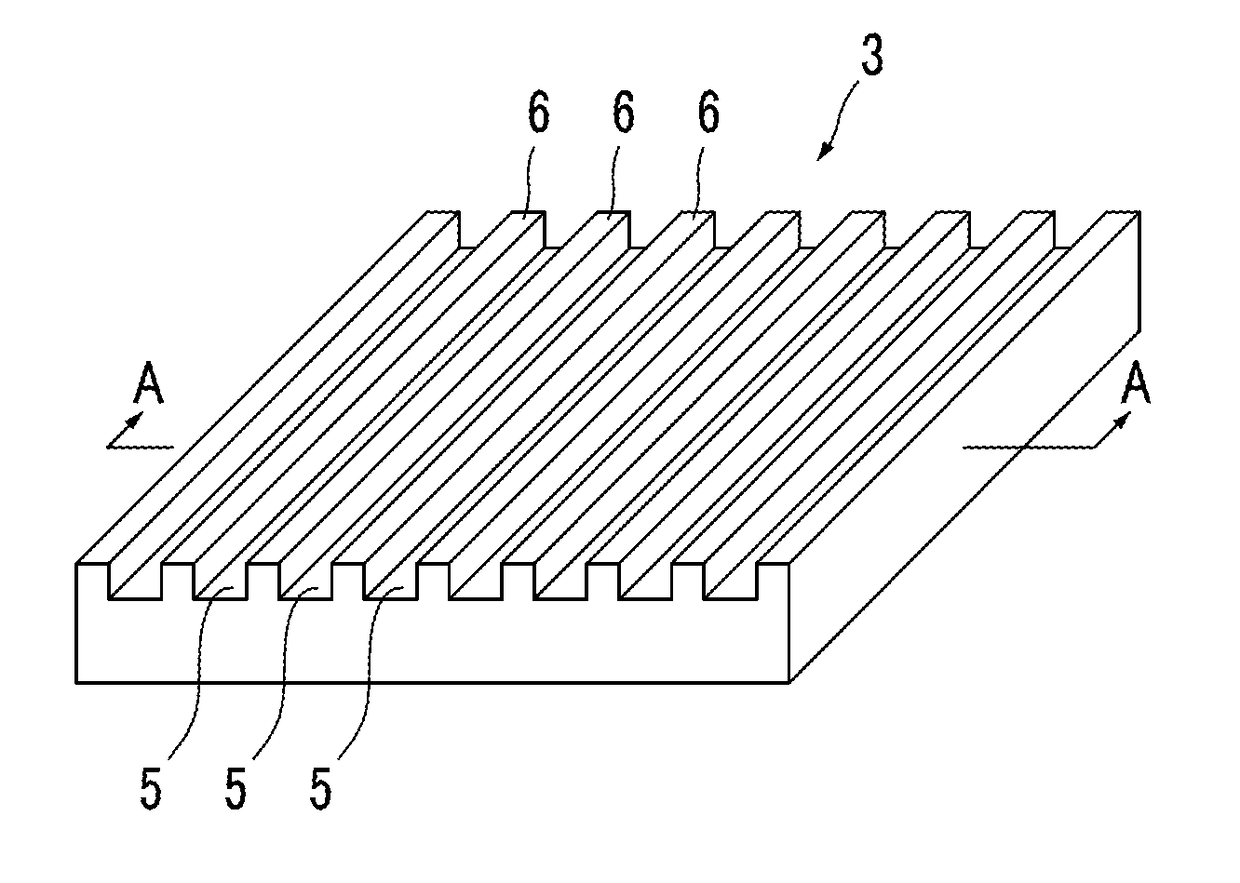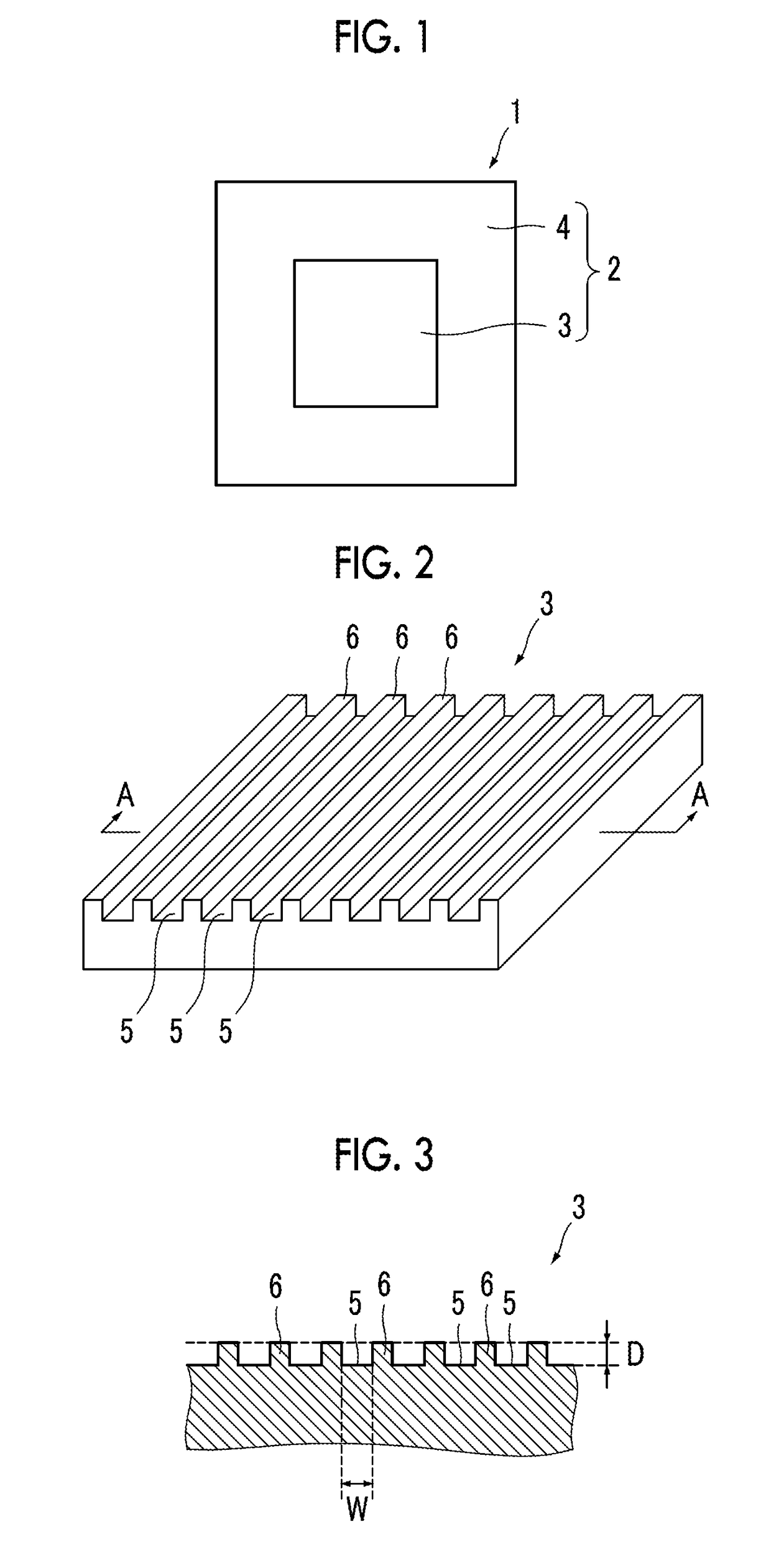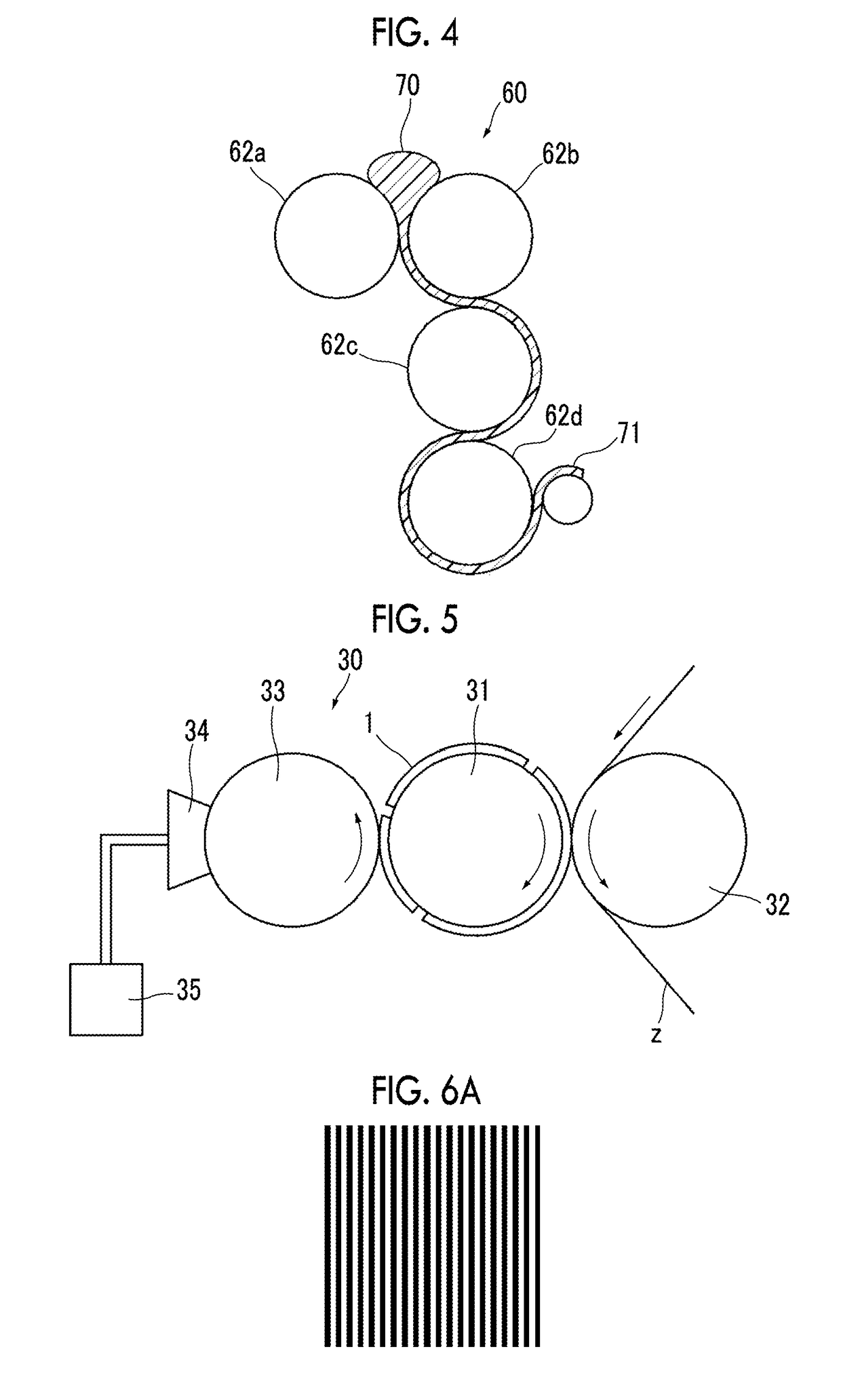Flexographic printing plate, flexographic printing plate precursor, and manufacturing methods therefor
a technology of flexographic printing plate and precursor, which is applied in the direction of plate printing, foil printing, instruments, etc., can solve the problems of insufficient improvement of ink transferability and low solid ink density, and achieve high ink transferability and high ink density
- Summary
- Abstract
- Description
- Claims
- Application Information
AI Technical Summary
Benefits of technology
Problems solved by technology
Method used
Image
Examples
example 1
[0255]
[0256]80 parts by mass of EPDM: MITSUI EPT1045 (ethylene-propylene-diene copolymer, ethylene content: 58% by mass, diene content: 5% by mass, kind of diene: (dicyclopentadiene (DCPD), manufactured by Mitsui Chemicals, Inc.) as a polymer 1, 12 parts by mass of carbon black #45L (nitrogen adsorption specific surface area: 125 m2 / g, DBP absorption: 45 cm3 / 100 g, manufactured by Mitsubishi Chemical Corporation) as a photothermal conversion agent, and 5 parts by mass of PERCUMYL D40 (dicumyl peroxide (40% by mass), manufactured by NOF CORPORATION) were kneaded to prepare a resin composition A.
[0257]
[0258]The obtained resin composition A was crosslinked by heating at a pressure of 10 MPa and 160° C. for 20 minutes using a heating press machine (MP-WCL, manufactured by Toyo Seiki Seisaku-sho, Ltd.) and thus a crosslinked relief forming layer having a thickness of 915 μm was formed.
[0259]A photocuring composition (3030, manufactured by Three Bond Co., Ltd.) was applied to one side of ...
examples 2 to 15
[0267]Flexographic printing plates were produced in the same manner as in Example 1 except that the conditions in laser engraving (light quantity and image pattern) were changed to the conditions shown in Table 1 below.
[0268]In Table 1 below, regarding the image patterns, the image patterns shown in FIGS. 6B to 6H are respectively denoted as image patterns 2 to 8.
[0269]In the image pattern 2 (FIG. 6B), the line width of the recessed line was 1 pixel (10 μm), the line width of the projecting line was 2 pixels (20 μm), and the pitch was 3 pixels.
[0270]In the image pattern 3 (FIG. 6C), the line width of the recessed line was 1 pixel (10 μm), the line width of the projecting line was 3 pixels (30 μm), and the pitch was 4 pixels.
[0271]In the image pattern 4 (FIG. 6D), the line width of the recessed line was 1 pixel (10 μm), the line width of the projecting line was 5 pixels (50 μm), and the pitch was 6 pixels.
[0272]In the image pattern 5 (FIG. 6E), the line width of the recessed line was...
examples 16 to 18
[0276]Flexographic printing plates were produced in the same manner as in Example 1 except that the polymer 1 used in the resin composition was changed to polymers 2 to 4 shown below, respectively, the amount of carbon black was changed to 9 parts by mass, the amount of PERCUMYL D40 was changed to 0.2 parts by mass, and the heating pressing was performed at 180° C. for 10 minutes.
Polymer 2: syndiotactic 1,2-polybutadiene RB820 (manufactured byJSR Corporation)Polymer 3: syndiotactic 1,2-polybutadiene RB830 (manufactured byJSR Corporation)Polymer 4: syndiotactic 1,2-polybutadiene RB840 (manufactured byJSR Corporation)
PUM
| Property | Measurement | Unit |
|---|---|---|
| roughness | aaaaa | aaaaa |
| roughness | aaaaa | aaaaa |
| surface average roughness | aaaaa | aaaaa |
Abstract
Description
Claims
Application Information
 Login to View More
Login to View More - R&D
- Intellectual Property
- Life Sciences
- Materials
- Tech Scout
- Unparalleled Data Quality
- Higher Quality Content
- 60% Fewer Hallucinations
Browse by: Latest US Patents, China's latest patents, Technical Efficacy Thesaurus, Application Domain, Technology Topic, Popular Technical Reports.
© 2025 PatSnap. All rights reserved.Legal|Privacy policy|Modern Slavery Act Transparency Statement|Sitemap|About US| Contact US: help@patsnap.com



